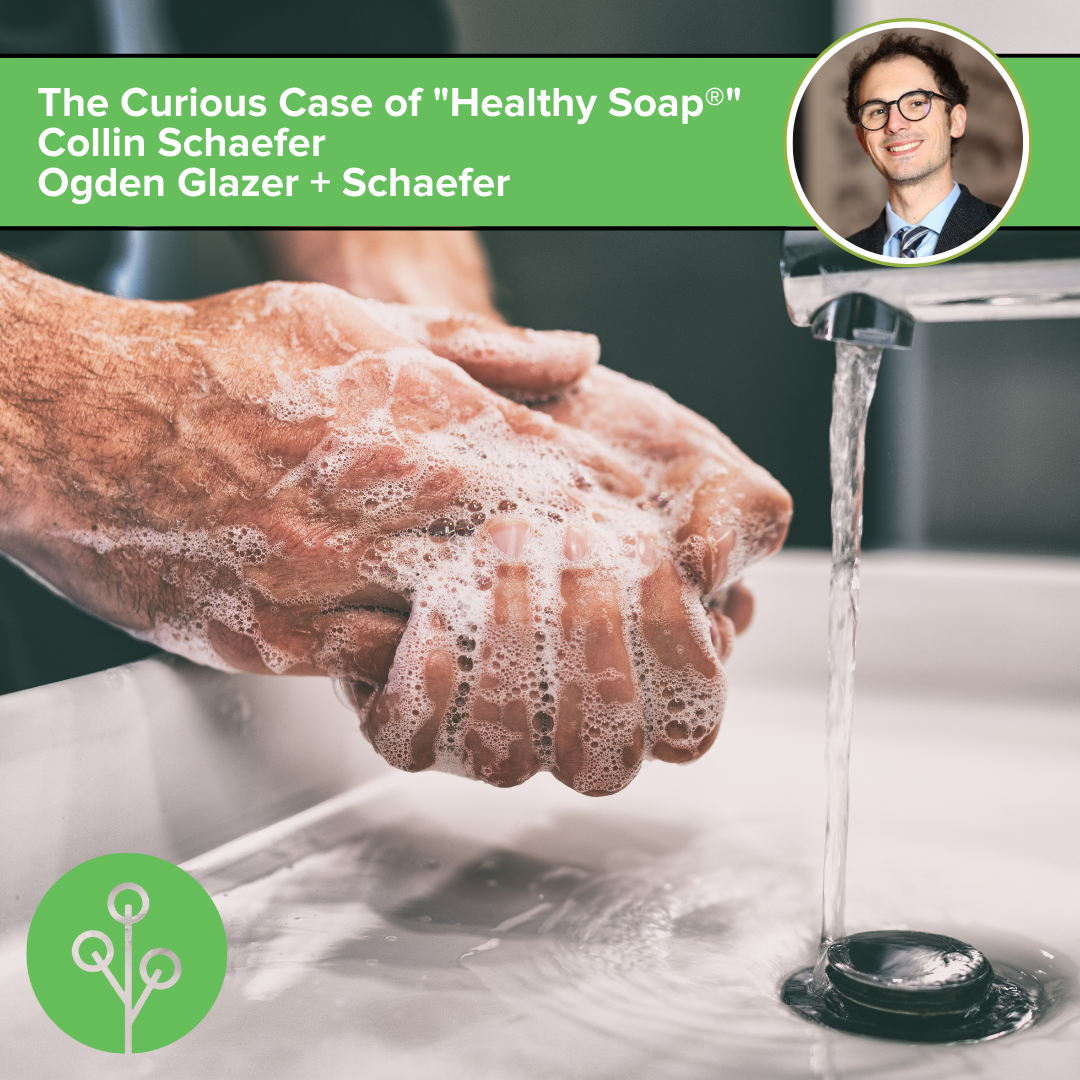A previous version of this blog post failed to take into account some nuance and important facts, namely that Healthy Soap (R) was actually registered on the USPTO’s Supplemental Register. Thanks to our readers for bringing this to my attention and for allowing us to expand on some important trademark basics.
As the father of a three year old boy, I spend… more time than I would like in public bathrooms. When you’re three, public bathrooms are a real place of wonder. Questions abound: Is there a “stand-up potty?” Is the paper towel machine automatic? What about the sink and soap dispenser, are they automatic too? And why can’t you touch anything in the stall? (Because people are disgusting, that’s why.)
On my fifth trip to the Riverside Park boys’ bathroom over the 4th of July weekend, the automatic soap dispenser caught my eye. It said “Healthy Soap®” on it, which seemed odd to me. Here’s why.
Merely Descriptive
First and foremost, “merely descriptive” parts of a potential trademark cannot (usually) be protected. The policy behind that rule makes sense—one cannot have a monopoly on words used to describe attributes of a product or service. For example, in the hypothetical trademark “Dewey Cheatem & Howe Law Firm,” the words “Law Firm” are merely descriptive of the legal services provided and cannot (usually) be protected. Attys. Dewey, Cheatem, or Howe cannot mount a trademark infringement lawsuit against another law firm for using the term “Law Firm” in their name.
Turning to “Healthy Soap,” I thought to myself, “Isn’t soap inherently healthy? Doesn’t it make you healthier? Isn’t ‘healthy soap’ just merely descriptive of an attribute of soap?” (Yes, this was a real thought I had. I can’t turn it off.)
The answer is yes. At least one Examining Attorney at the United States Patent and Trademark Office (USPTO) agreed with me that “Healthy Soap” is merely descriptive of an attribute of soap and cannot (usually) be protected as a registered trademark.
But, l said usually cannot be protected…what about “unusual” situations?
Supplemental Register (Showing of Secondary Meaning)
If a trademark owner can show that a merely descriptive trademark, or portion of a trademark, has acquired “secondary meaning” in the marketplace it actually can be protected. What is secondary meaning? Basically, if consumers recognize the trademark as an indicator of source (the company that owns the trademark) rather than descriptive of an attribute of the products or services provided, the mark can be protected.
The most famous example of this is probably “Holiday Inn.” Where do you stay on a Holiday? In an Inn…so “Holiday Inn” is merely descriptive of hotel services. But…we all know, when you hear and see Holiday Inn…you don’t think about hotel services generally, you think about the brand, Holiday Inn. Therefore, Holiday Inn, the trademark, has acquired secondary meaning in the marketplace (or, in other words, secondary meaning in your mind).
Is there a place where a trademark can go while its acquiring secondary meaning? Yes, the Supplemental Register. The Supplemental Register (rather than the Principal Register) is a place where trademarks awaiting the acquisition of secondary meaning can go, and still have a certain level of protection (and also utilize the circle (R) symbol). Generally, after five years on the Supplemental Register, a trademark owner can show secondary meaning and apply for protection on the Principal Register. (Owners can apply for the Principal Register sooner…but 5 years of use makes it much easier).
Back to Healthy Soap (R)
Given all that we’ve talked about above – lets get back to Healthy Soap (R). In this case, Healthy Soap (R) is merely descriptive of an attribute of soap, but not so descriptive (generic) that it couldn’t be protected. Therefore, until Purell can show 5 years of continuous use of the trademark in the marketplace, Healthy Soap can hang out on the Supplemental Register, and once secondary meaning can be shown (based on 5 years of use, or massive marketing spend as Purell has likely done, or both) the mark eventually can move to the Principal Register and be protected just like “Holiday Inn.”
We won’t go into the differences between the Supplemental and Principal Register in this post, but its important to remember that even if your mark is on the Supplemental Register vs. Principal Register, you can still display the Circle (R) next to the trademark.
Thanks for reading. Now go wash your hands!

